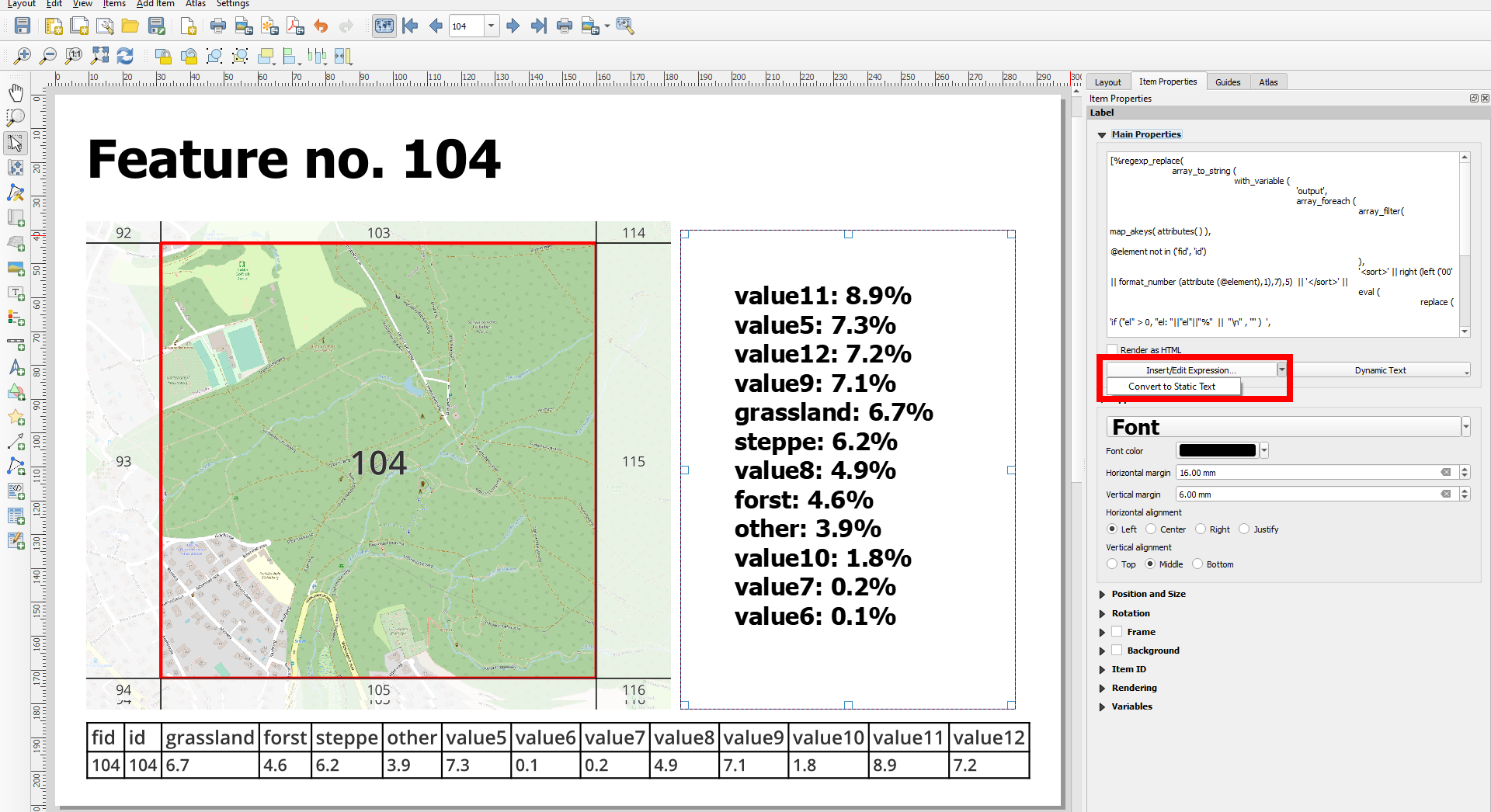In QGIS 3.16. I've created an atlas layout based on a polygon layer. There is one page per feature, with various objects in it including maps, labels, html objects, and images for that feature.
What is rendered on the atlas pages comes directly from my layer from the attributes for that feature -- as it should be. But sometimes I'd like to make a change to a page before printing -- just for that one feature, not for others.
The most common example arising in my case is the following:
- an html object which creates a bullet list based on attribute values for a given field.
Occasionally this list is much too long for the space available on the report page, but I don't really want to change the value in the attribute table (or create a new attribute with an abbreviated version). It would be really useful to have the option to edit the text on the page. In some cases, I would like to add more text than what is there (again, without adding this text to the attribute value in the table).
It seems what I am asking for is a report which, once published, allows data entry and modification in the manner of a form (but without actually changing the attribute values in the table).

